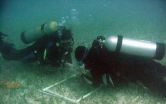(Press-News.org) PITTSBURGH, May 23 – In one of the most comprehensive analyses to date of the cost of robotic-assisted, laparoscopic surgery for prostate cancer, researchers at UPMC found that this now-dominant surgical approach is significantly more costly than standard open surgery, despite little scientific evidence of long-term improved patient outcomes. The results of the study are available online and will appear in the July issue of the journal Urology.
In one of the first studies based on actual direct and indirect costs at a single institution—rather than computer models that evaluate theoretical costs—the researchers found that the mean total cost per case of robotic-assisted laparoscopic radical prostatectomy (RARP) exceeded by 62 percent the cost of open radical retropubic prostatectomy (RRP). There was no significant difference in the mean length of stay for patients undergoing RARP vs. RRP, 1.2 and 1.4 days, respectively.
Since payment to the hospital was nearly equivalent for both types of procedures, the hospital lost $4,013 on average for each RARP case, while the payments exceeded costs by $1,325 for the standard open approach. Most of the cost difference, researchers found, was attributable to the robotic equipment and supplies.
"Nearly 240,000 new cases of prostate cancer are diagnosed annually, and radical prostatectomy is the most common treatment," said Joel B. Nelson, M.D., senior author of the study and chairman of the Department of Urology at UPMC and the University of Pittsburgh School of Medicine. "The value of that care for patients is of particular concern to a nation struggling to control health care costs while improving outcomes." During the past decade, he noted, RARP has become the dominant surgical approach in the treatment of prostate cancer, with a surgeon controlling a robot's arms remotely to remove cancerous organs through small incisions in the patient's abdomen. Yet there is limited data to show that this technological innovation has produced better long-term patient results. "It is reasonable to question whether the increased costs of this robotic-assisted approach are justified," said Dr. Nelson, who is also co-director of the University of Pittsburgh Cancer Institute's Prostate Cancer Program.
For their cost analysis, the researchers looked at the treatment of 473 consecutive patients from July 2009 to October 2010 at UPMC Shadyside hospital. Four urologic oncologists with considerable experience in RARP and RRP operated on these patients, using RARP for 115 and RRP for 358.
The overall cost per case for RARP exceeded the cost for RRP by almost $5,300. The major contributors to the cost gap were greater operating room supply costs and indirect costs associated with the purchase and maintenance of the robotic equipment. Operating room supply costs were almost seven times greater for RARP, while ancillary, cardiology, imaging, administrative, laboratory and pharmacy costs were not significantly different between the two approaches.
Several previous studies also have demonstrated a cost advantage for the standard open surgical approach. However, those studies sometimes excluded certain costs or involved hospitals with lower surgical volumes or surgeons who were less experienced with the robotic-assisted technology, potentially skewing the cost per case.
Dr. Nelson noted that randomized clinical trials—the gold standard in scientific research—comparing RRP and RARP are lacking. But a recent review of 37 comparative prostatectomy studies found no superiority for one approach vs. the other in terms of functional (such as post-operative continence and potency) and oncologic outcomes for patients.
"While further studies are needed to compare the long-term outcomes of RRP vs. RARP, our study suggests that our society may be paying too high a price for what has been widely perceived as a medical advance," said Dr. Nelson.
###Besides Dr. Nelson, the study authors are Jeffrey J. Tomaszewski, M.D., Benjamin J. Davies, M.D., Stephen V. Jackman, M.D., and Ronald L. Hrebinko, M.D., all of UPMC's Department of Urology, and Jarred C. Matchett, UPMC finance.
http://www.upmc.com/mediarelations
Robotic-assisted prostate cancer surgery drives up costs, UPMC study finds
2012-05-23
ELSE PRESS RELEASES FROM THIS DATE:
Millions of Seniors Still Drive, Study Finds
2012-05-23
As we get older, it becomes more difficult to do many everyday activities -- and driving is no different. Despite the challenges associated with driving as a senior citizen, the Insurance Institute for Highway Safety reports that 78 percent of people age 70 and above -- about 22 million seniors -- are still driving.
We're all familiar with media stories that involve senior citizens driving off the road, and sometimes injuring the unsuspecting people around them. But, statistics show that generally speaking, older drivers are not as much of a harm to others as you might ...
Deterring signals: Tobacco plants advertise their defensive readiness to attacking leafhoppers
2012-05-23
This press release is available in German.
Tobacco: actually pretty bad food for leafhoppers
Empoasca sp. is not a typical pest of wild tobacco (Nicotiana attenuata). When this plant grows in its natural habitats in North America, however, it is attacked by tobacco hornworm larvae (Manduca sexta). This specialist insect is resistant to the toxic nicotine, which the plant produces as a defense against its enemies. When researchers from the Max Planck Institute for Chemical Ecology used particular transgenic plants in field experiments, they noticed that these plants were ...
Drug Ads Often Gloss Over Side Effects, Enlist Doctor Endorsements
2012-05-23
Prescription drug advertisements have become ubiquitous in United States' media, including television and magazines. Unfortunately, these ads may be ultimately misleading about potential side effects, placing patients at risk.
How Drug Marketing Campaigns Portray Side Effects
Drug companies use several techniques to downplay the side effects of the potentially dangerous drugs they are advertising.
First, a drug company may enlist a celebrity to endorse its product. For example, the anti-inflammatory drug Enbrel is promoted by professional golfer Phil Mikelson. ...
How Traumatic Brain Injuries Affect Children
2012-05-23
Traumatic brain injury -- often called TBI -- is brain damage that can be caused by a blow or jolt to the head, as well as by an object penetrating the skull. Oftentimes, TBIs are not life threatening and those who suffer from mild injuries experience temporary brain-cell dysfunction -- which results in symptoms such as headaches, sleep-pattern changes, mood alterations and loss of consciousness that lasts for a few seconds to a few minutes.
In other cases, TBIs can be quite severe, causing serious damage or even death to the victims.
The Causes and Effects of Severe ...
Study supports urate protection against Parkinson's disease, hints at novel mechanism
2012-05-23
Use of the antioxidant urate to protect against the neurodegeneration caused by Parkinson's disease appears to rely on more than urate's ability to protect against oxidative damage. In the May issue of the open-access journal PLoS One, researchers from the MassGeneral Institute for Neurodegenerative Diseases (MGH-MIND) describe experiments suggesting the involvement of a novel mechanism in urate's protection of cultured brain cells against Parkinson's-like damage.
"Our experiments showed, unexpectedly, that urate's ability to protect neurons requires the presence of ...
'Obesity genes' may influence food choices, eating patterns
2012-05-23
PROVIDENCE, R.I. – Blame it on your genes? Researchers from The Miriam Hospital's Weight Control and Diabetes Research Center say individuals with variations in certain "obesity genes" tend to eat more meals and snacks, consume more calories per day and often choose the same types of high fat, sugary foods.
Their study, published online by the American Journal of Clinical Nutrition and appearing in the June issue, reveals certain variations within the FTO and BDNF genes – which have been previously linked to obesity – may play a role in eating habits that can cause obesity. ...
How to Improve Your Credit After Bankruptcy
2012-05-23
If you have filed for bankruptcy, you may wonder what your credit will look like after you obtain your discharge of debt. You understand that a bad credit rating means credit cards and loans will be more expensive and harder to get. However, you may be surprised to find your credit could be better than you expect.
Bad Credit?
The good news is your credit can probably only improve. If you had to file bankruptcy, your financial situation was probably rather unstable. All of your creditors were aware of this; after all, they were the ones harassing you to pay their bills.
Once ...
Seagrasses can store as much carbon as forests
2012-05-23
Seagrasses are a vital part of the solution to climate change and, per unit area, seagrass meadows can store up to twice as much carbon as the world's temperate and tropical forests.
So report researchers publishing a paper this week in the journal Nature Geoscience.
The paper, "Seagrass Ecosystems as a Globally Significant Carbon Stock," is the first global analysis of carbon stored in seagrasses.
The results demonstrate that coastal seagrass beds store up to 83,000 metric tons of carbon per square kilometer, mostly in the soils beneath them.
As a comparison, a ...
New Program Increases New York Bus Safety Inspections
2012-05-23
About a year ago, 15 people were killed in a commercial bus that was traveling from Connecticut to New York City. A few months later, 30 bus passengers were injured in upstate New York in an accident that killed a truck driver. According to Governor Andrew Cuomo, these New York bus accidents are just two examples of why it's necessary to increase the amount of commercial bus inspections conducted by the Department of Transportation. To that end, Cuomo and the New York State Legislature recently approved $1 million in the state budget to create a program that will allow ...
Albany's Sorely Lacking Sidewalks Can Be a Danger to Wheelchair Users
2012-05-23
An elongated crack, a random upheaval -- less than perfect sidewalks can send almost anyone caught off guard tumbling. For those in wheelchairs, shoddy sidewalks can even mean a complete lack of mobility.
In New York State, a person in a wheelchair is considered a pedestrian, and is subject to all pedestrian traffic laws. Yet, the neglected state of a good number of sidewalks in Albany can make compliance with the law difficult or impossible, substantially raising the risk of pedestrian accidents.
Wheelchair Users Can Be Forced Into Traffic Due to Unsafe Sidewalks
If ...

